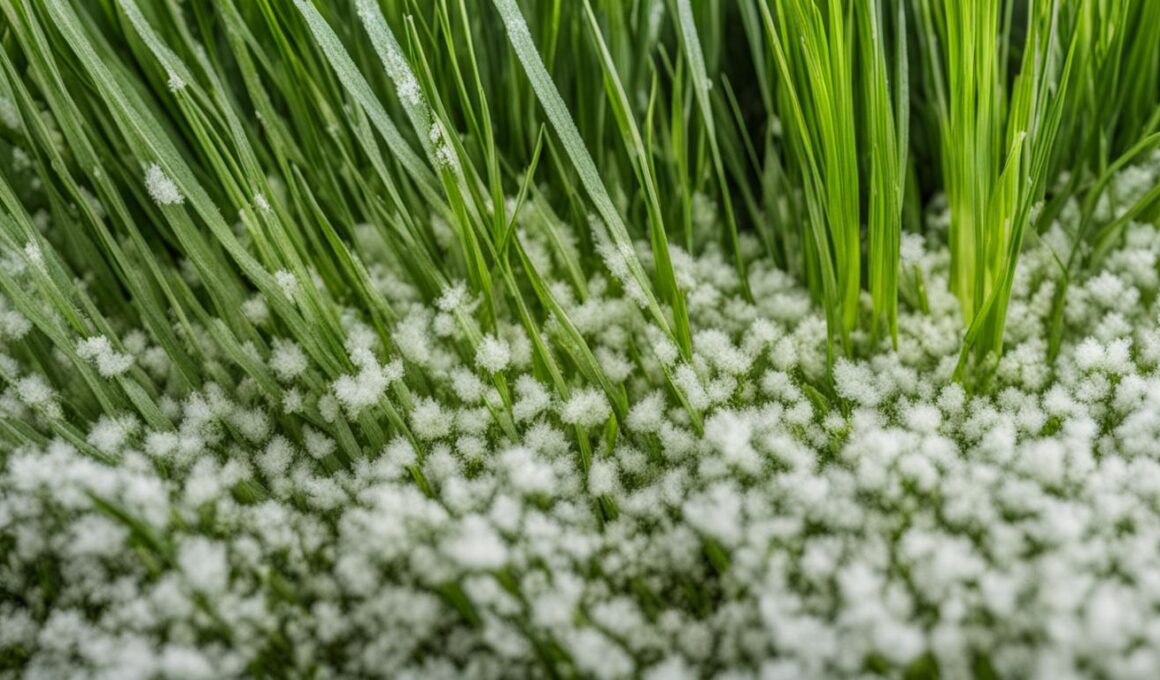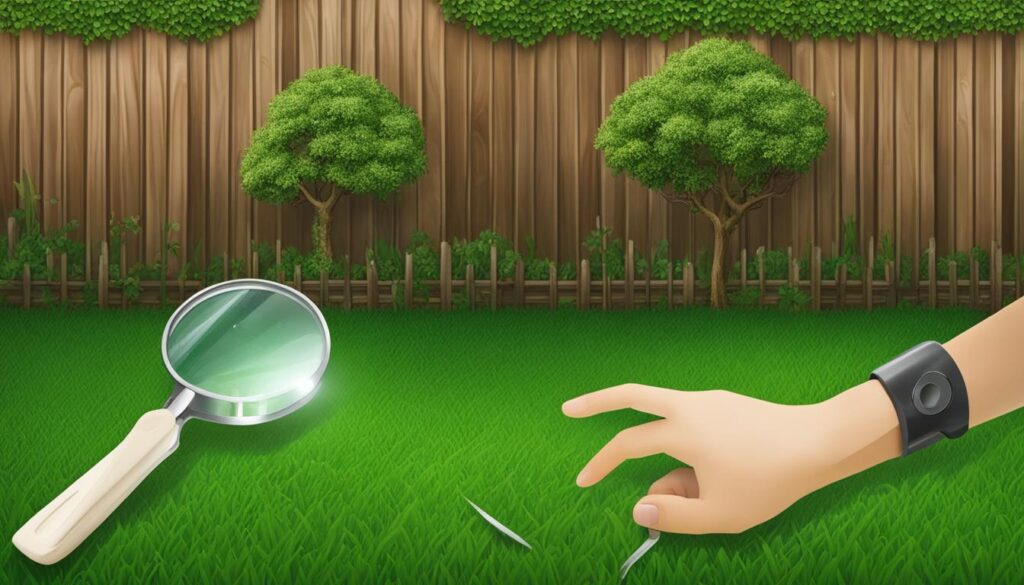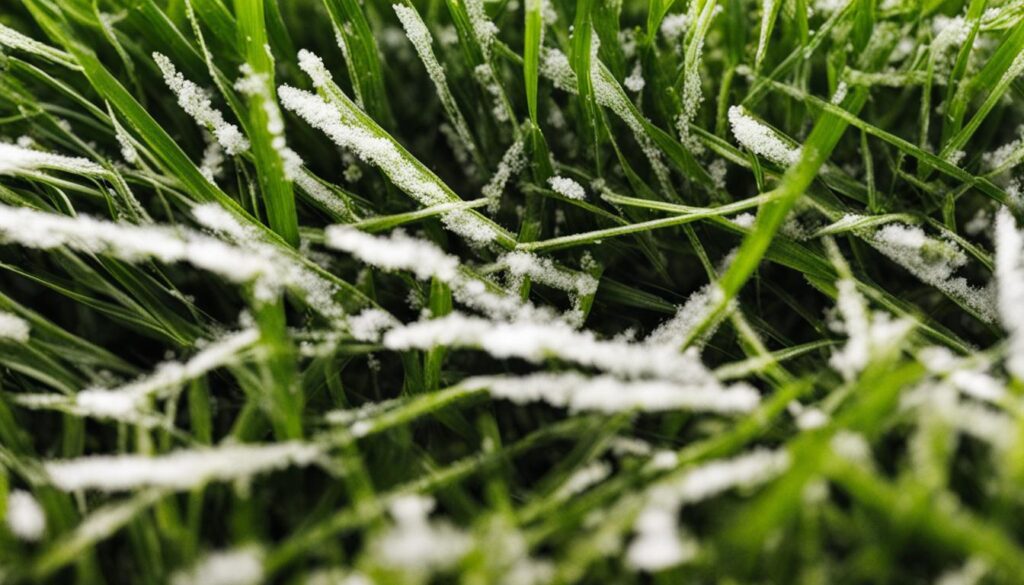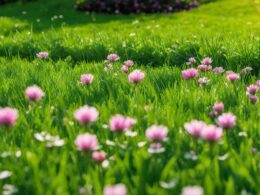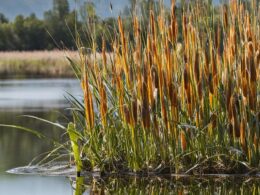Are you tired of dealing with white mold on your grass? Don’t worry, we’ve got you covered! In this article, we will provide you with effective prevention and cure tips to help you combat white mold and keep your lawn looking lush and healthy.
White mold, also known as powdery mildew, is a common fungal disease that can wreak havoc on your grass. It appears as white or gray powdery spots on the leaves, stems, and even the fruit of the grass, causing them to turn yellow, wither, and eventually die. If left untreated, white mold can quickly spread and ruin the aesthetic appeal of your lawn.
But fret not, because we have some tried-and-true prevention tips to help you keep white mold at bay. By ensuring proper airflow, maintaining adequate spacing between plants, and choosing grass varieties with increased resistance to white mold, you can prevent its occurrence in the first place.
Already dealing with white mold on your grass? No problem! We have some natural remedies and fungicides that can help you treat the problem effectively. From milk spray and baking soda solutions to organic fungicides and commercial options, there’s a solution for every level of white mold infestation.
Remember, prevention is always better than cure, so it’s essential to take proactive steps to protect your lawn from white mold. With our tips and tricks, you can maintain a healthy and beautiful grassy oasis.
Stay tuned for the following sections, where we’ll delve deeper into understanding white mold, prevention tips, natural remedies, fungicides, as well as identifying plants that are susceptible to white mold. By the end of this article, you’ll be equipped with all the knowledge you need to beat white mold and keep your grass thriving.
Understanding White Mold on Grass
White mold, also known as powdery mildew, is a common fungal disease that affects various types of plants, including grass. It appears as white or gray powdery spots on the leaves, stems, and even the fruit of the grass. White mold thrives in warm, dry climates with high humidity levels. It can cause the leaves to turn yellow, become withered, and eventually die if left untreated.
White mold on grass can be visually unappealing and detrimental to the overall health of your lawn. Understanding the characteristics and risk factors associated with white mold is crucial for effective prevention and treatment. Whether you are an avid gardener or you simply want to maintain a beautiful lawn, it’s essential to be equipped with the right knowledge to combat this problematic condition.
Prevention Tips for White Mold on Grass
Preventing white mold on grass is crucial to maintaining a healthy lawn. By following these effective prevention tips, you can keep your grass free from white mold and enjoy a lush and vibrant lawn.
1. Ensure Proper Airflow
One of the key factors in preventing white mold on grass is maintaining proper airflow. Regularly prune and thin out vegetation to allow air to circulate freely. This will help reduce the humidity levels that promote the growth of white mold.
2. Maintain Adequate Spacing
Another important prevention tip is to maintain adequate spacing between plants. This will ensure good air circulation which can help prevent the development and spread of white mold. Be mindful of the recommended spacing guidelines for the specific grass varieties in your lawn.
3. Provide Proper Sunlight
Placing plants in areas with proper sunlight according to their needs is essential for their overall health and can also help prevent white mold. Make sure your grass receives enough sunlight, as excessive shade can create a favorable environment for mold growth.
4. Remove Dead or Diseased Foliage
Regularly remove dead or diseased foliage from your lawn. This includes any grass blades that show signs of white mold. Removing infected foliage promptly will help prevent the spread of the fungus and keep your lawn healthy.
5. Disinfect Pruning Tools
After each use on infected plants, thoroughly disinfect your pruning tools to prevent the transmission of white mold to healthy grass. This simple step can significantly reduce the risk of spreading the fungus.
6. Choose Resistant Grass Varieties
When selecting grass varieties for your lawn, consider choosing those with increased resistance to white mold. These resistant varieties are less susceptible to fungal diseases and can provide an added layer of protection for your lawn.
By implementing these prevention tips, you can proactively defend your grass against white mold and maintain a beautiful and healthy lawn.
Natural Remedies for Treating White Mold on Grass
If you’re dealing with white mold on your grass, you’ll be relieved to know that natural remedies can be an effective solution. Here are some natural remedies you can try:
- Milk spray: Mix one cup of skim milk with nine cups of water and spray the affected areas twice a week. Skim milk contains amino acids and salts that can help control and kill the fungus.
- Baking soda solution: Mix one tablespoon of baking soda with a gallon of water and spray the affected areas every three days until the mold is gone. Baking soda can help control fungus and prevent its growth.
- Horticultural oil: Use horticultural oil, following the recommended dosage, to control white mold on grass. Apply the mixture twice a week to affected areas.
- Neem oil: Mix one ounce of neem oil with a gallon of water and spray affected areas every seven to 14 days. Neem oil acts as a fungicide, miticide, and insecticide and can prevent new growth of the fungus.
These natural remedies provide an eco-friendly and cost-effective way to combat white mold on your grass. Give them a try and say goodbye to white mold for good!
Treating White Mold on Grass with Fungicides
In severe cases of white mold on grass, fungicides can be a crucial tool in effectively treating the problem. When other prevention and natural remedies have not yielded satisfactory results, fungicides offer a potent solution. Here are some options to consider when using fungicides for treating white mold on grass:
- Organic fungicides containing sulfur: Organic fungicides that contain sulfur can be used both as a preventive measure and as a treatment for existing white mold infections on grass. Follow the recommended dosage and application instructions to ensure best results.
- Potassium bicarbonate: To treat existing white mold infections, mix one tablespoon of potassium bicarbonate with half a teaspoon of liquid soap in a gallon of water. Apply the solution thoroughly to the affected areas. This mixture has been proven effective in combating white mold on grass.
- Commercial fungicides: There are various commercial fungicides available in the market specifically formulated for treating white mold on grass. It is essential to carefully read and follow the instructions provided on the product label to ensure safe and effective application.
When using fungicides, it is important to keep in mind that they should be used as a last resort when other methods have failed, and they should be applied according to the manufacturer’s instructions. It is also crucial to wear protective clothing and take necessary precautions to safeguard your health and the environment.
Plants Susceptible to White Mold on Grass
White mold on grass can be a common issue, but it’s not exclusive to turf. Certain plants are also susceptible to this fungal infection. Here are some plants that are commonly affected:
- Zucchini
- Melons
- Cucumbers
- Squash
- Roses
If you have any of these plants in your garden, it’s important to monitor them closely for signs of white mold. Taking proactive measures can help keep your entire outdoor space healthy and thriving.
Will Safe Weed Control Methods Also Help Prevent White Mold on Grass?
Yes, using a safe weed control option can also help prevent white mold on grass. By choosing a method that targets weeds without harming the grass, you can maintain a healthier lawn overall. This can reduce the conditions that promote white mold growth and keep your grass looking its best.
Conclusion
Dealing with white mold on grass can be a challenging task, but with the right prevention and treatment methods, you can successfully combat this fungal disease. By implementing proper techniques, you can maintain a healthy and vibrant lawn, free from the detrimental effects of white mold.
To prevent white mold on grass, it is essential to prioritize good airflow. Regularly pruning and thinning out vegetation, as well as maintaining adequate spacing between plants, can promote better air circulation and reduce the likelihood of mold growth. Additionally, choosing grass varieties with increased resistance to white mold and placing plants in areas with suitable sunlight can further prevent the development of this fungal disease.
If white mold does appear on your grass, there are several treatment options available. Natural remedies, such as milk spray, baking soda solution, horticultural oil, and neem oil, can effectively control and kill the fungus. These remedies offer a safer and more eco-friendly alternative to chemical-based fungicides. However, in severe cases, the use of fungicides may be necessary. Organic fungicides containing sulfur or potassium bicarbonate, as well as commercial fungicides specifically for white mold, can help eliminate the fungal infection.
By following these prevention and treatment tips, you can maintain a beautiful and healthy lawn, free from the destructive impact of white mold. So take action today and protect your grass from the nuisance of white mold.





